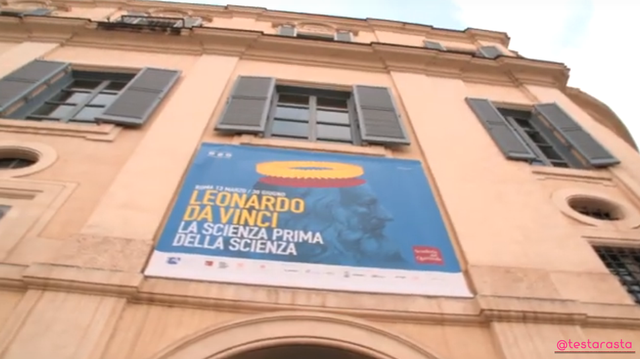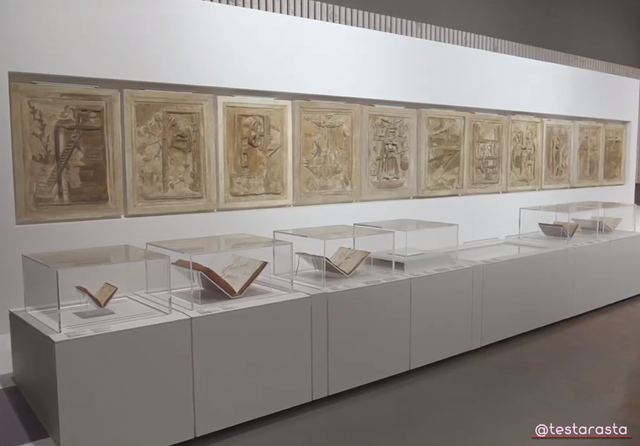The universal genius of Leonardo Da Vinci in the exhibition in Rome.
Italy is the European country hardest hit by the COVID-19 coronavirus pandemic.
It is a fact in the public domain. And that has prevented tourists not only from moving and staying at home but from visiting the many exhibitions and exhibitions that take place throughout the year on the Italian peninsula throughout its territory.

And one of the shows, which I personally visited last year, is the one dedicated to the universal genius of Leonardo Da Vinci.
And one of the shows, which I personally visited last year, is the one dedicated to the universal genius of Leonardo Da Vinci.
This sample, in principle, was to be open until April 2020.
When this coronavirus nightmare ends I think it will reopen to allow tourists from all over the world to see the wonders projected and built by the genius of Florence.
The hydraulic saw.
This is one of many ingenious inventions that the artist designed in his sketches.
Although today the wood industry has large, precise and productive machines, remember that the historical context in which this machine was designed was quite different.

Mechanical lion.
Leonardo da Vinci's original mechanical lion was long lost, but detailed drawings of the mechanisms remain to see how the inventor managed to get the animal to work.
Leonardo da Vinci is not only as he is often associated, the painter of the Mona Lisa and the Last Supper, but also a manufacturer of automatisms: true robots that without motor or electricity were capable of walking on their own. Such movements surprised the powerful of the time and became real whims.

Giant crossbow.
Leonardo's crossbow or giant crossbow was a weapon designed by Leonardo da Vinci, whose drawings are in the Atlantic Codex.
He never realized the universal genius of all the copies that would be built in modern times in museums dedicated to genius.

The bicycle.
In a section of Leonardo da Vinci's "Codez Atlanticus" a drawing of a In a section of Leonardo da Vinci's "Codez Atlanticus" a drawing of a bicycle already appeared.
Leonardo already thought of a chain transmission like the ones used today. These drawings were scattered over time and were collected in the Ambrosiana library in Milan already appeared.
Leonardo already thought of a chain transmission like the ones used today.

Helicopter and glider.
One of da Vinci's most famous inventions, the flying machine (also known as the "ornithopter") ideally displays his powers of observation and imagination, as well as his enthusiasm for flight potential.
The design of this invention is clearly inspired by the flight of winged animals, which da Vinci hoped to replicate. In fact, in his notes, he mentions bats, kites, and birds as sources of inspiration.

The Codex Atlanticus.
The Leonardo da Vinci exhibition "Science Before Science", until the end of June at the Scuderie del Quirinale in Rome, is built around ten autograph drawings of the Atlantic Codex, chosen from among the approximately 1,750 that compose it.
The exhibition, like the Codex, tells of Leonardo's greatness outside the fields with which he is traditionally associated, from painting to inventions.
In fact, it testifies to the enormous contribution that the Tuscan artist made to engineering, architecture, hydraulics, mechanics, urban planning and in general to scientific-technological culture.
ogether with the drawings, the exhibition displays more than 200 works including models, manuscripts, volumes, prints and paintings from various Italian and European institutions.

View this post on TravelFeed for the best experience.

Congratulations @testarasta! You received the biggest smile and some love from TravelFeed! Keep up the amazing blog. 😍 Your post was also chosen as top pick of the day and is now featured on the TravelFeed.io front page.
Thanks for using TravelFeed!
@invisusmundi (TravelFeed team)
PS: Why not share your blog posts to your family and friends with the convenient sharing buttons on TravelFeed.io?
Thank you @invisusmundi for commenting and voting on the content of this post.
It is an important incentive to continue participating with original and own content.
Greetings and have a good weekend